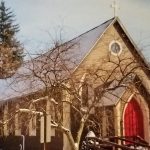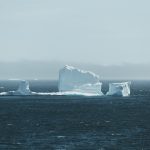Article by Peter Koeppel, member of Trinity Memorial Church in Binghamton. Koeppel serves on the diocesan Stewardship Resources team and the diocesan Creation Care Initiative.
I didn’t come up with this reflection’s title. I owe it to Dr. Beth Alison Shapiro, who devoted a whole book to this topic.
We’ve talked a lot about climate, energy, and how our fossil fuels-based energy consumption is powering global heating. Although our dependence on fossil fuels bears some resemblance to an addiction—it’s hard to wean ourselves off it—I refuse to call it an addiction, as doing so would appear to place all the agency for our dependence on fossil fuel-based energy entirely on us; but as always, it takes more than one to tango… We’ll leave all that, for this time, to look at another aspect of how humans have profoundly altered God’s creation.
Consider all the wild animals we humans have domesticated: aurochs became cattle; wolves became dogs; various grasses became today’s wheat, rye, and maize. But it’s not just the selection and purposeful evolution of ancient living beings by which we transform God’s creation. Chickens became the most common species of birds. We almost brought bison, which preceded humans in their migration from Asia to North America, to extinction, not once, but twice: when followed by the first humans, also from Asia, bison evolved to become smaller, so the species could survive in more marginal environments; when yet more humans arrived, this time from the east, bison were killed down to a population of maybe a very few hundred. This time, their survival came at a price: having interbred with cattle sometime ago, they were now being bred commercially for food, and docile behavior became important in that setting. The wild bison of our National Parks are much smaller than their original immigrant ancestors and they, too, carry some cattle genes.
Now with gene editing technology we have gone a step further and are on the brink of curing serious disease as well as accelerating the speed with which we select for the traits in living beings, from slow selection generation after generation, to leaps from one generation to the next.
Are we getting to the true scope of our impact on God’s creation yet? Consider: the biomass of domesticated mammals is perhaps some 14 times that of wild mammals. About a third of Earth’s dry land is devoted to food production—for humans and our domesticated animals. A good bit of the remainder of earth’s surface is used for shelter, and don’t forget the part that’s used for industry and commerce. After that, what’s left is often neither habitable nor arable.
When you look out your window, what do you see: objects created by humans, such as buildings, streets, various kinds of wiring strung on poles? If you see a meadow, who put it there? If it’s a field of one grain or another: who put it there? If you see a forest: is it actually an old-growth forest, and if not: who put it there? If it’s an old-growth forest, think about how the common red earthworms, an imported, invasive species, have altered its undergrowth. When you look out your window, or walk through your neighborhood: do you see ANYTHING that wasn’t created or at least arranged by humans???
When we step back and really take a look at how we have made ourselves “masters” of God’s creation, the magnitude of our impact on our small home planet is staggering. Could it be that we have just never set our eyes on anything that we, in the end, didn’t bend to our will? Does our manipulation of God’s creation include, deep within itself, the seed of our own destruction?
Our responsibility to care for God’s creation doesn’t just begin and end with global heating; without question, addressing global heating is a serious challenge, and one we must succeed in addressing. “There is no try—only do or do not!” And “do not” is not an option. But as we focus on this challenge, we should not forget the many other ways in which we have changed God’s creation—they are all expressions of our power—power to fundamentally alter so many aspects of God’s creation. Yet, with all our impact on God’s creation, we are neither divorced nor isolated from it—we are part of it as much as it is part of us, and thus we should approach it with the humility befitting something so much larger than ourselves, and with the respect for the eternal laws that govern it, none of which we can change. We have our work cut out for ourselves.
———-
Many of the statistics and some of the other details cited above come from Dr. Shapiro’s book “Life as we made it” (ISBN-10 1541644182); it is available at many booksellers, and your local bookseller will be happy to get you your copy.


